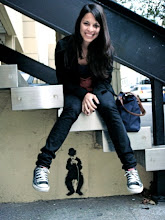
I wanted to watch this film because I enjoyed a lot Hiroshima Mom Amour and I was curious to find differences and similarities between these two films. However, I was mostly attracted to Wild Grass to attempt to discover whether or not Resnais’ geniality to manipulate and experiment with cinema’s conventions and boundaries could still be considered prominent and transgressive.
If I had to describe my impression of Wild Grass in one word, it would be perplexity. I think this is one of those films that you have to watch a couple of times to truly understand it. I was allured by the impression I was getting the meaning of the film throughout its first half to realize, however, that my interpretations were far from the actual meaning of the story. For instance, I had initially thought that George’s wife was his daughter, which significantly changes the understanding of their relationship and course of actions.
On the other hand, I was pleased to see Hiroshima Mom Amour echoed throughout Wild Grass. For example, there is an extensive use of voice over and internal monologues. The effects of these monologues in the viewer resembles the waves of the sea: they take us extremely close to the characters by entering into their minds to then push us away and alienate us as we loose track of the central meaning and sense of their dialogues. In addition, as in Hiroshima Mom Amour the characters’ faces are not shown to the audience only after a significant long time.
An interesting, and arguably obvious, difference between Hiroshima Mom Amour and Wild Grass is Resnais’ play with color. I could not avoid wondering how he would have used color in Hiroshima Mom Amour given the fact that its use and manipulation was so obvious in Wild Grass. Neon lights are present in almost every scene, tinting the whole frame with green, red, blue, and yellow tonalities. Color is meticulously present not only in the choice of lighting, but also in every mise-en-scene. For example, the color blue plays an important role throughout the film. It represents the sky, the only place where Marguerite Muir is completely fulfilled, free, and happy. In addition, blue signifies beginnings and endings, death and birth. George’s and Marguerite’s relationship becomes tangible within the confines of a blue-glass building. However, this newly born relationship fades away and dies, along with their lives, in the plain accident (once again, they were confined by the color blue). The presence of blue as a signifier of death and endings can also be found in the fact that the first and only time when George complains about his wife, confessing the precarious state of their relationship, is when he is painting his house blue. On the other hand, red represents, as usual, passion and desire. Marguerite has a fluffy and lion-like red hair, symbolizing a forbidden fruit and object of desire.
In this film, Resnais seems to incorporate in a serious yet ironical degree, different genre and film conventions. For example, the sequence in which George decides to leave the wallet he had found at the police station, seems a tribute to film noir. The combination of low-key lighting with window blinds that create horizontal shades of light and shadow are very characteristic of this film genre. As to make such resemblance more prominent, there are deformed shadows of people reflected in a glass wall. Another film convention Resnais plays with is the over-imposition of imaginary actions as the characters meditate and decide on their course of action. Finally, it cannot be ignored the apparent end of the film in which George and Marguerite embrace with an over the top, old-Hollywood style kiss while the word “Fin” flashes by.

No comments:
Post a Comment